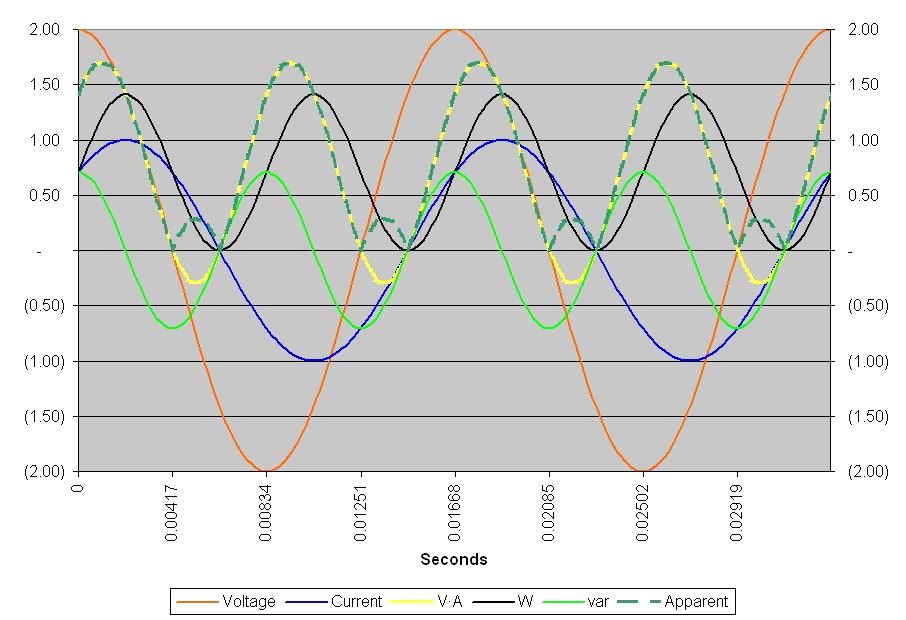Have it your way:
Have it your way:
Makes sense to me because the vi product is, in general, the algebraic sum of real and reactive powers. If you can speak of instantaneous vars, you can speak of instantaneous vas.
And, I know of no hard and fast rule on this matter; it seems to merely be a metter of personal preference. So to each his own.
Have it your way:
One Volt times one Amp at the same instant is one Watt.
It doesn't matter what happened before or happens afterwards.
It is still one Watt.
Describing as anything else is nonsensical.
Makes sense to me because the vi product is, in general, the algebraic sum of real and reactive powers. If you can speak of instantaneous vars, you can speak of instantaneous vas.
And, I know of no hard and fast rule on this matter; it seems to merely be a metter of personal preference. So to each his own.


